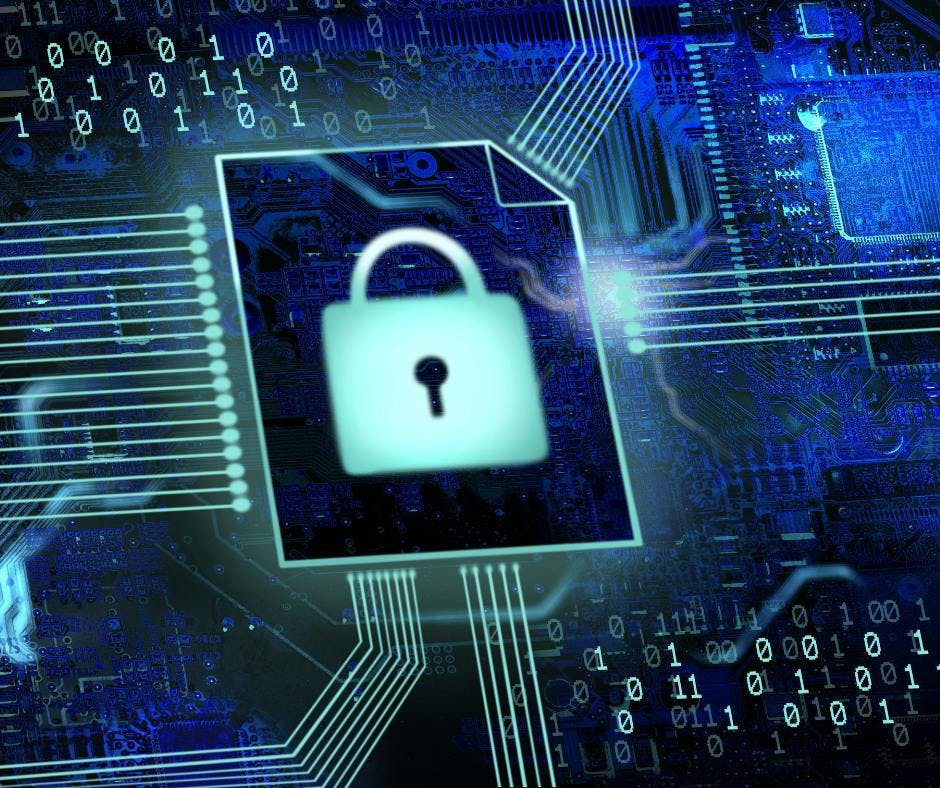There are many reasons why businesses seek out enterprise-level file management platforms—for the ease of use in sharing files, to have a unified place for server and cloud storage, or to have a backup option in case of disaster. However, the most important reason businesses seek file management platforms is that they offer a secure solution for the sensitive data that travels through their organizations daily.
Wondering exactly how these platforms keep data and files secure? Here are the essential 5 features that any enterprise-level file management platform should have.
1) End-to-End Encryption
The goal of secure file management is to keep the entire channel of communication encrypted whether your data is in transit or at rest. For those less familiar with data transfer, when data is in transit it means it’s traveling from network to network or being transferred from a local storage device to a cloud storage device.
Data is subjected to risks while in transit or at rest—therefore it requires protection in both states. Look for standard encryption methods approved for use by the National Institute of Standards and Technology (NIST), which dictates the standard that government files should be encrypted at Advanced Encryption Standard (AES) 256-bit. For example, SmartFile encrypts files at rest with AES 256-bit, and files in transit use 128-bit encryption.
SmartFile’s on-premise file sharing solution uses encryption at rest to secure inactive data stored on any device or network. This also means that even if a data thief were to take something from an on-premise client and plug it into their own hardware, they would not be able to access the data.
2) User Management Options

With hardware and applications secured up to the highest level, it’s less likely that a data breach would occur through a weakness in the system, however, it’s more likely that it would occur due to negligence on a user’s part. Regardless of how well you may train your employees, mistakes are bound to happen.
Intelligent file management systems have to account for the human error that users often make. A business will want to choose a file management platform that lets an administrator control use through granular user permissions.
For instance, in SmartFile’s file management platform, we provide administrators the option to assign a home directory to a user that’s several layers below the actual home directory. Unlike a typical letter drive, the user can only view the home directory and cannot go into other parent folders or unassigned directories. Administrators can adjust this in groups and access permissions, but those are the default settings.
Groups can be extremely helpful for, you guessed it, groups of users. Instead of finding a folder to send to a group of people, you can create groups of the selected users and grant them access to certain folders. Groups allow you to apply the same permissions to the entire group; and if needed, modify individual users’ access rights to vary from the group.
Another feature that deals with secure file sharing is the option to only allow users to download and upload files using a secure connection method. Rather than using a browser UI through HTTPS, administrators can dictate files be transferred using FTP over SSL, and SFTP using authentication keys for login instead of usernames and passwords, or through WebDAV.
Having control of everything a user has access to, as well as how they can use files, is an essential feature to look for in a secure file management platform.
3) Compliance
Using IT tools and practices that are compliant with governmental (and internal) standards is an absolute must for running a secure, effective, and trustworthy organization. If people are entrusting you with their private medical and health information, you owe it to them as legally-protected customers and as human beings to protect that precious data.
IT compliance focuses on your data storing and security measures—storing data from the past, checking on correct processes in the present, and safeguarding confidential details for the future. IT compliance focuses on how your business’s tech and data follow policies to keep things on track both internally and externally. Remaining compliant helps you reduce threats and limit the damage of a cyberattack if one were to affect your business. Plenty of industries have strict compliance standards, such as:
Files are safeguarded with encryption, but also need a meticulous audit log that tracks file and site activity, including the login attempts, username, IP address, file path, and time/date that a file was accessed. In some industries, this data must be maintained for three, seven, and even the duration of someone’s life plus seven years.
SmartFile has always valued data privacy, and we pay close attention to the external factors affecting the specific industries we support. For instance, SmartFile has always been HIPAA-compliant. A HIPAA-compliant file management platform will ensure that any personal health information (PHI) is as secure as possible during storage and transfer.
4) Frequent Updates and Maintenance

Both maintenance and updates are important factors in choosing a file management platform. Without updates, your platform will depreciate not only in value but in security. New threats appear every day, therefore
SmartFile offers continuous maintenance, running antivirus scans on all files as their received. SmartFile updates for on-premise devices are offered quarterly and new features are being released as they’re built for cloud accounts.
5) File Lifecycle Management
Just like storage rooms of the past, many businesses have age-old files that they’re hoarding. This becomes a major problem if these documents contain PHI or other sensitive information and are not being actively managed or protected. These types of files need to be tracked and maintained, and file lifecycle management provides a plan throughout the file lifespan.
With file lifecycle management features, files can be tracked by date and activity, and even have the option to be automated. With automation, an administrator can create a path for a file and if they hit certain milestones, a specified action will occur.
Automating the file lifecycle is not always the most simple process, but it can prove very valuable for companies. Freeing up storage space for the most important information or documents can take the strain off of resources and save companies money—especially if they have allowed less than essential files to take up storage space.
SmartFile Can Check All Your Boxes
As mentioned above, encryption, user management, compliance, maintenance, and file lifecycle management are all essential elements of a secure file management platform. It’s important to consider your needs when searching for a file management and security platform to ensure you choose the right fit. When you work with SmartFile, you can access these five essential features to keep your business running smoothly with properly managed, organized files. Contact us today to start your free trial!
